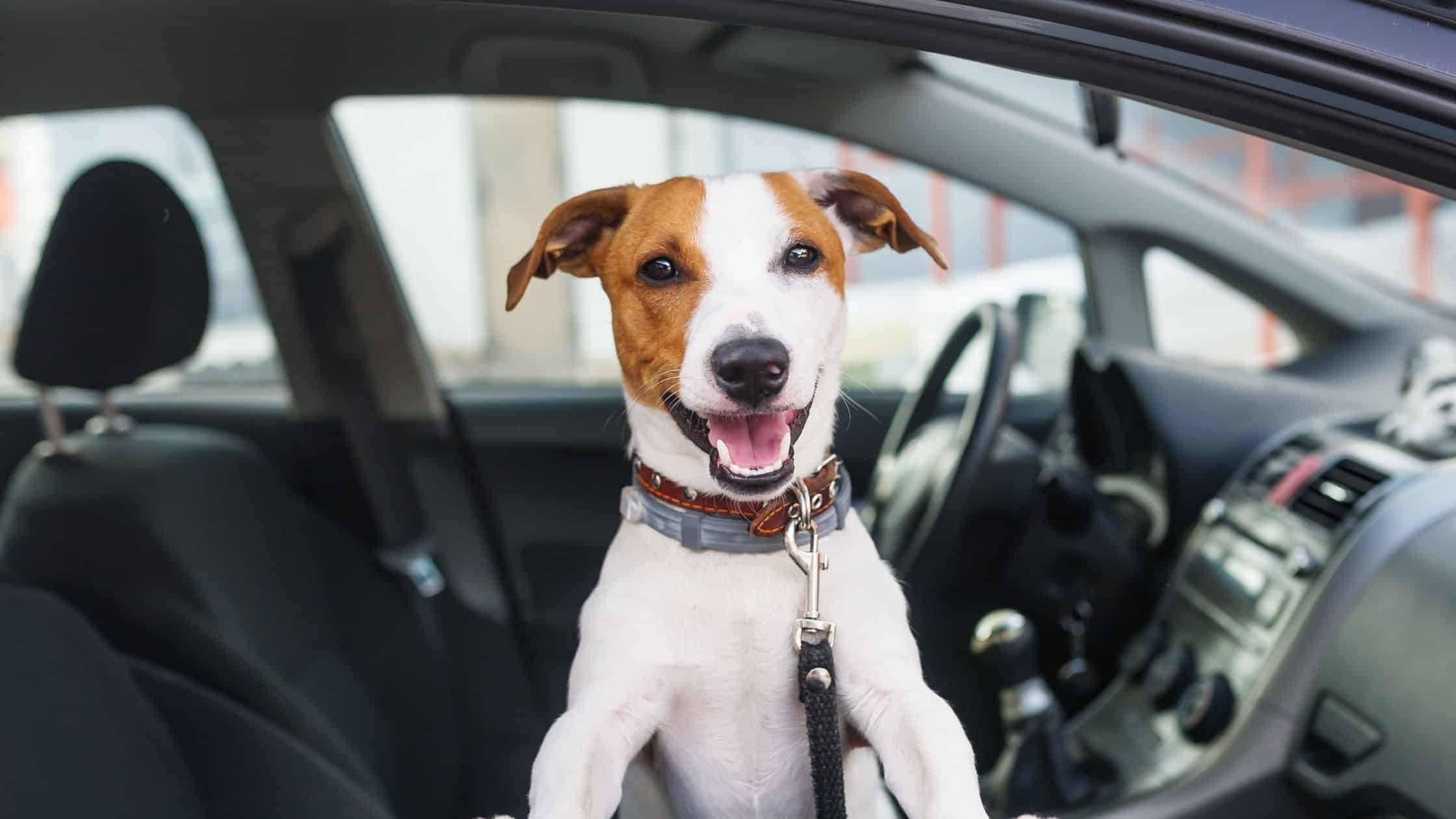5 Easy Ways to Keep Your Dog Safe In The Car While Traveling

This post contains affiliate links, and we will be compensated if you make a purchase after clicking on the links.
In 2019, Volvo found that traveling with your pets unrestrained increases the likelihood of unsafe driving behaviors. Distracted driving becomes particularly likely if your dog is moving around freely in the back of your car.
An unrestrained dog is also a potential projectile in a car crash. They may sustain major injuries or even die if they hit the dashboard or other passengers.
It is a dog owner’s duty to keep their pet properly restrained in the car while traveling. Below are some options that you have to keep your dogs comfortable and safe while in the car.
1. Put your dog in a crate
Keeping your dog in a crate in the trunk of your car is one of the best ways to restrain smaller dogs while driving.
A crate makes sure that your dog stays in one place in the event of an accident, protecting both the animal and other passengers.
You can also tether the crate to a seat for added security. This will keep the crate in place and prevent it from moving around and lurching forward if you suddenly stop.
One thing to consider is your pet’s familiarity with confinement. If they’re not used to being inside a crate, it may not be a good idea to keep them in one as it may cause them distress and lead to behavior that causes distraction to a driver.
2. Buckle up your dog with a dog seatbelt
Dog seat belts are chest harnesses that attach to your car’s regular seatbelt. This will keep your dog from leaping into the front seat or lurching forward when you hit the brakes.
Using dog seat belts is not the best method for restraining restless dogs because it significantly restricts their movement. It may cause them to bark and cry, distracting the driver in the process.
Dog seat belts should also be avoided if your dog weighs less than nine kilograms. If a dog weighs less than this, they are not heavy enough to cause the belt to taut if they suddenly jerk forward.
3. Choose a zipline harness for active dogs
A zipline harness is one of your best options if you have an active and energetic dog.
This type of restraint will keep your dog safe in the back seat while still allowing them to move around.
The zipline attaches to the opposite grab handles, and the harness secures your dog to the zipline.
Just make sure that the harness has the right length to allow your dog to move while also preventing them from falling off the seat in the event of a sudden stop.
4. Give your dog a comfy place in the back seat with a passenger seat hammock
A passenger seat hammock kills two birds with one stone— it gives a place for your dog to lie down and also acts as a barricade that will keep your dog from jumping into the front seat.
Senior dogs would benefit the most from a passenger seat hammock as they often need to rest their legs.
A hammock with a non-slip covering will also provide a more comfortable ride for your dog because it will not easily slip off the seat.
5. Elevate anxious dogs with a plush carry box
A plush carry box is ideal for small or nervous dogs.
It serves as a booster seat for your dog and allows them to see the world outside the car. This can be particularly comforting for a younger dog.
You can also put your dog’s favorite toy in the plush box to help them relax even more.
Comfort and Safety Can Go Hand in Hand
Restraining your dog while traveling doesn’t mean you’re causing them discomfort.
The various options presented above still provide comfort to your dog without jeopardizing their or your safety. You just need to test and see which method your dog responds to the best.
Making the journey as pleasant as possible is important so your dog can learn to love traveling in a car. Some things that you can do to achieve this are:
- Take a break – take a rest at regular intervals so your dog can go for a walk and stretch their muscles, eat, and relieve themselves.
- Avoid giving them food while driving – this distracts you from the road, and a sudden brake or turning in your car while your dog is eating could lead to a choking hazard.
- Do not leave your dog alone inside the car – Dogs can overheat and suffer from heatstroke. Maintain proper ventilation while your dog is in your vehicle by leaving the windows half open or turning on the air conditioning.
In addition, having a pet first aid kit ready and getting pet insurance will also be useful if you are involved in an accident.
This article provides a guide to understanding pet insurance for your companions.
About the Author
This article was contributed by Mike Skoropad. Mike is the CEO of automotive parts retailer United Tires.
